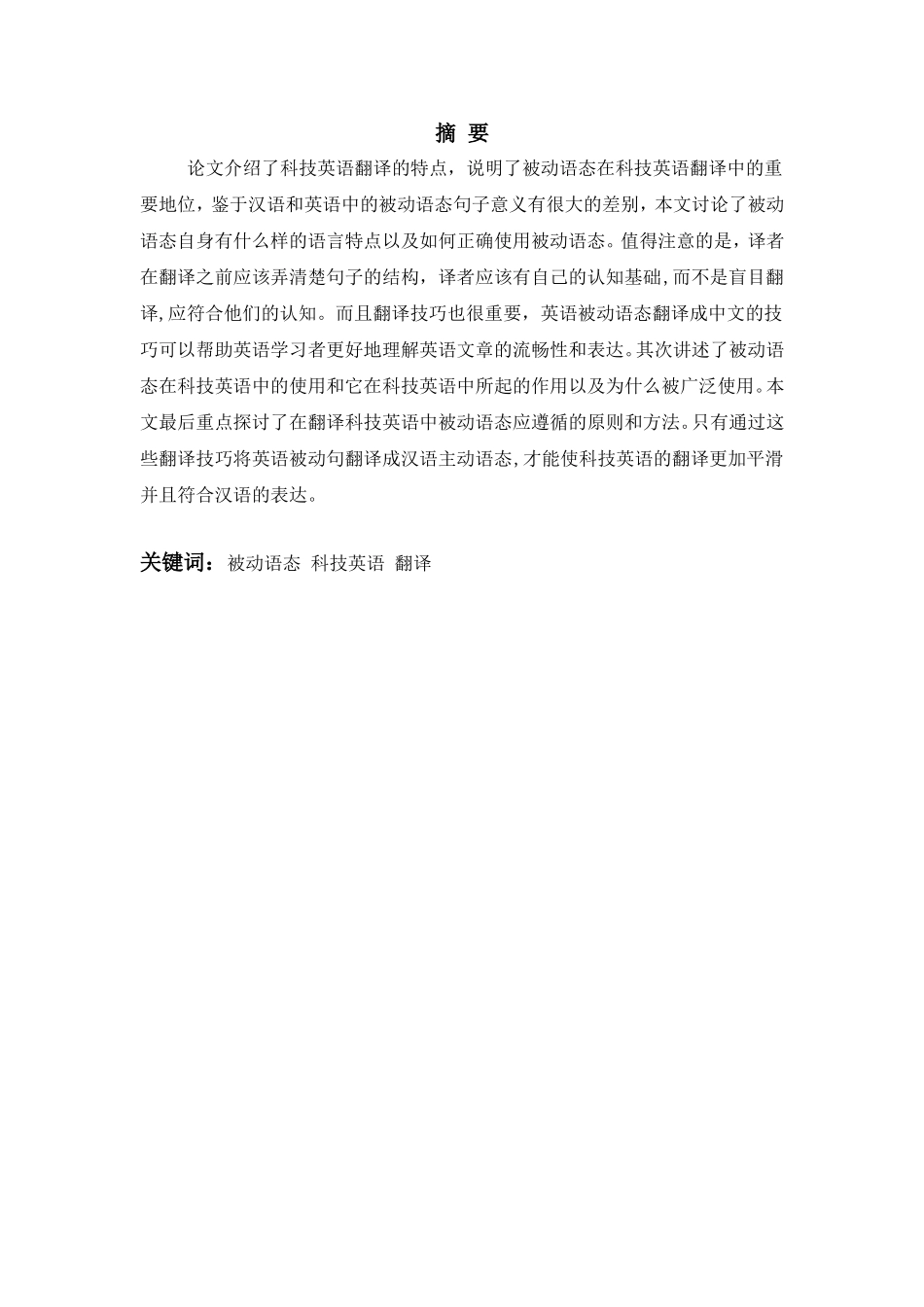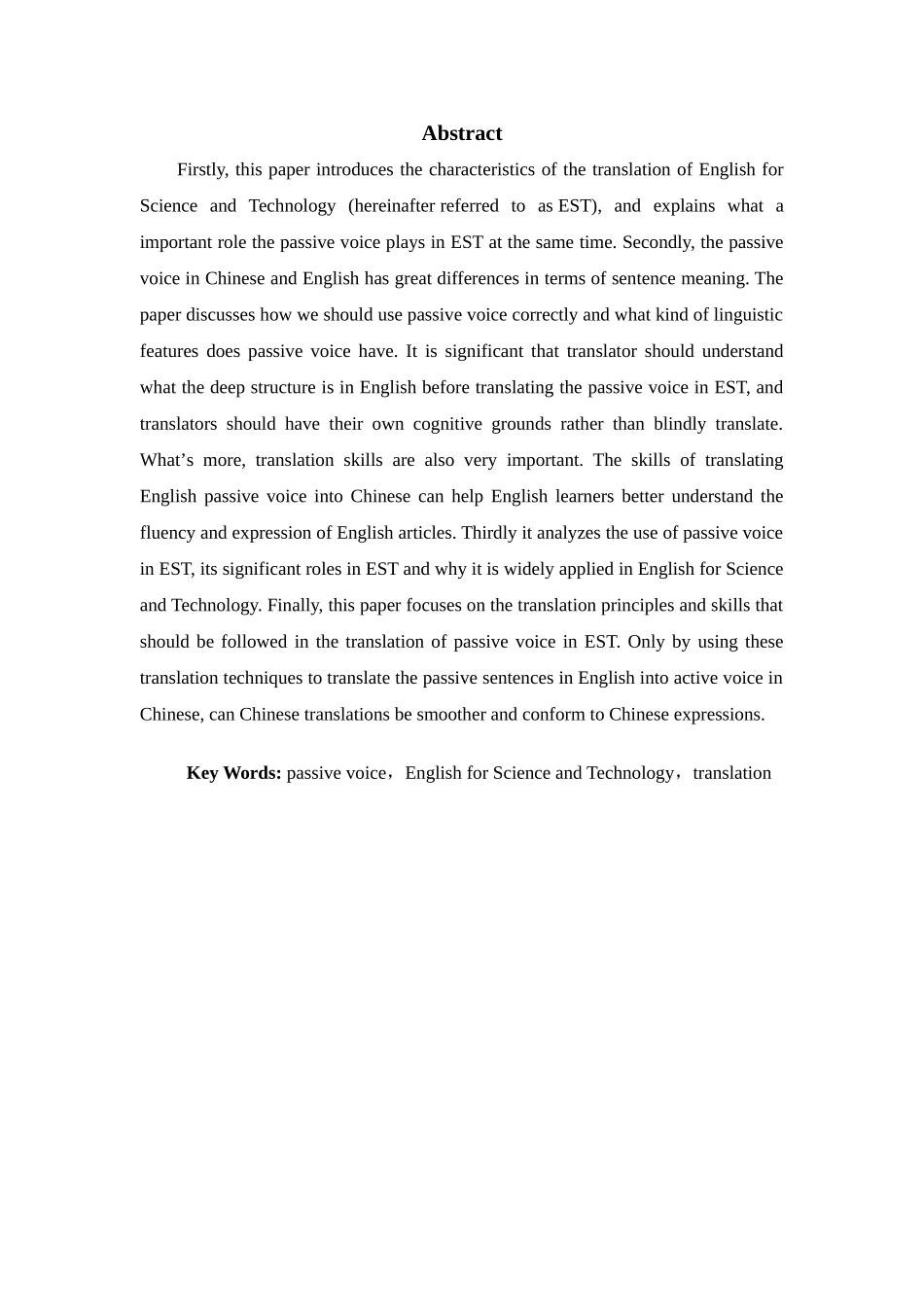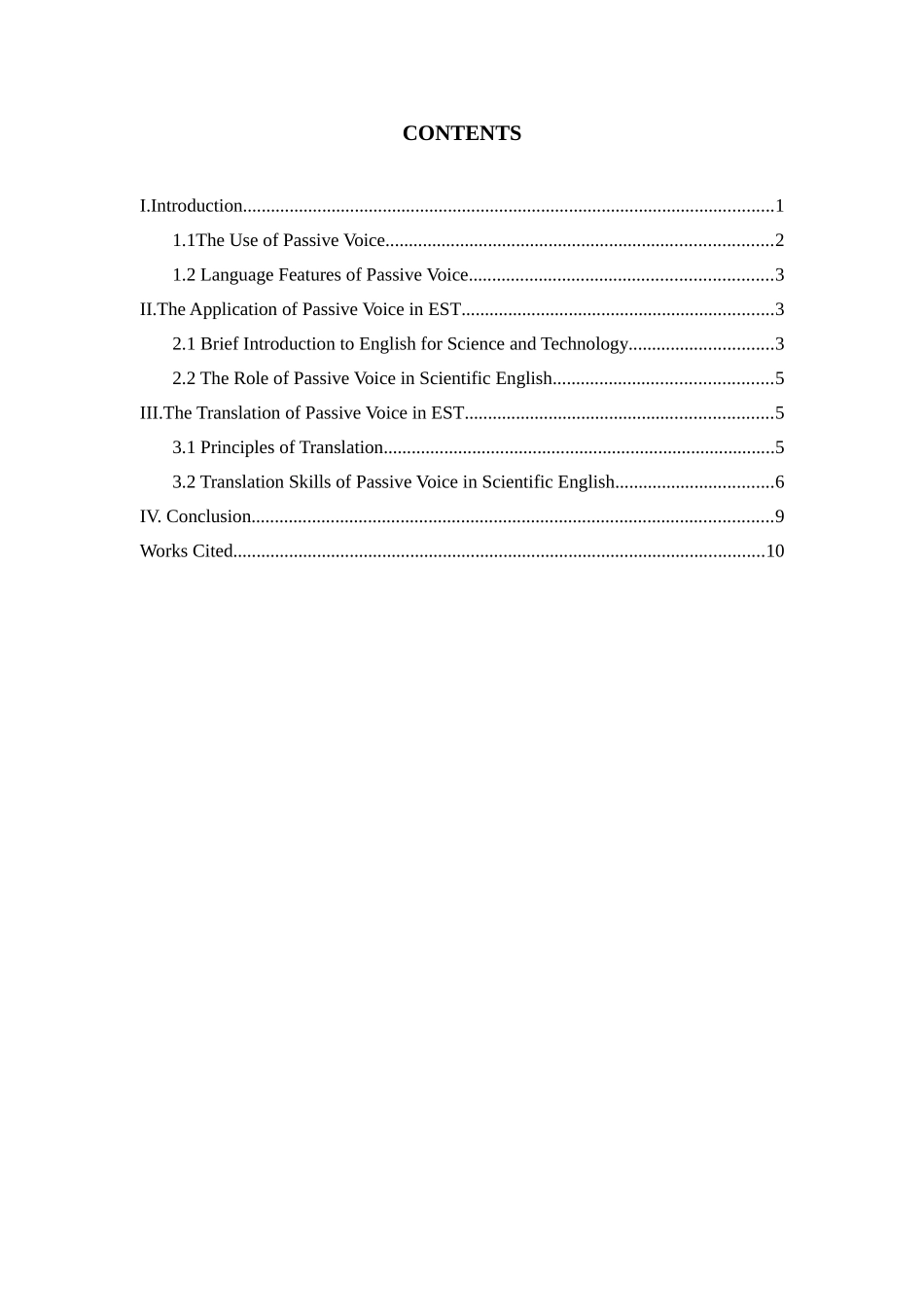摘 要 论文介绍了科技英语翻译的特点,说明了被动语态在科技英语翻译中的重要地位,鉴于汉语和英语中的被动语态句子意义有很大的差别,本文讨论了被动语态自身有什么样的语言特点以及如何正确使用被动语态。值得注意的是,译者在翻译之前应该弄清楚句子的结构,译者应该有自己的认知基础,而不是盲目翻译,应符合他们的认知。而且翻译技巧也很重要,英语被动语态翻译成中文的技巧可以帮助英语学习者更好地理解英语文章的流畅性和表达。其次讲述了被动语态在科技英语中的使用和它在科技英语中所起的作用以及为什么被广泛使用。本文最后重点探讨了在翻译科技英语中被动语态应遵循的原则和方法。只有通过这些翻译技巧将英语被动句翻译成汉语主动语态,才能使科技英语的翻译更加平滑并且符合汉语的表达。关键词:被动语态 科技英语 翻译 AbstractFirstly, this paper introduces the characteristics of the translation of English for Science and Technology (hereinafter referred to as EST), and explains what a important role the passive voice plays in EST at the same time. Secondly, the passive voice in Chinese and English has great differences in terms of sentence meaning. The paper discusses how we should use passive voice correctly and what kind of linguistic features does passive voice have. It is significant that translator should understand what the deep structure is in English before translating the passive voice in EST, and translators should have their own cognitive grounds rather than blindly translate. What’s more, translation skills are also very important. The skills of translating English passive voice into Chinese can help English learners better understand the fluency and expression of English articles. Thirdly it analyzes the use of passive voice in EST, its significant roles in EST and why it is widely applied in English for Science and Technology. Finally, this paper focuses on the translation principles and skills that should be followed i...


